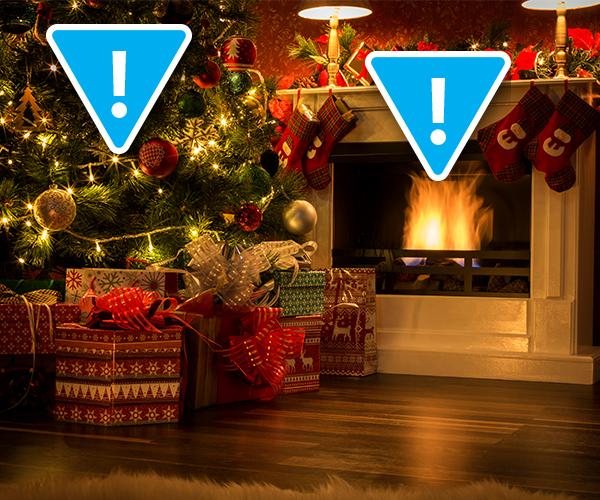How to Prevent Christmas Tree Fires for a Happy Holiday
According to the National Fire Protection Association (NFPA), one of every 45 reported Christmas tree fires results in a death, on average. This is in comparison to an average of one death per 139 total reported home fires.
To reduce the risk of a Christmas tree fire in your home check out these 10 tips from the National Fire Protection Association (NFPA):
1. Don’t overload your tree with too many light strands
When you get too many strands on your tree, you can overload your outlet and end up with too much heat on your tree. Look at the manufacturer’s instructions for the number of light strands you can safely connect.
2. Keep your tree at least three feet away from any heat sources
While it’s certainly picturesque to have a beautiful Christmas tree by your lit fireplace, it’s also dangerous. A heat source too close to the tree causes roughly one in every four Christmas tree fires (NFPA). Beyond fireplaces, also pay attention to how close your tree is to any radiators, candles, heat vents or lights.
3. Keep your Christmas tree out of the way of an exit
Keep trees clear of hallways and doors you need to use in the event of a home fire. Just like other furniture, you need a clear path to get out of your home in the case of an emergency.

4. If you have a real Christmas tree, keep it watered
It’s recommended you water a live Christmas tree every day. If you keep your home particularly toasty during the winter, you may need to check the tree stand more often to ensure it’s still properly hydrated. A dry tree is a huge fire hazard.
5. Replace old Christmas tree light strands
According to the NFPA, electrical distribution or lighting equipment was involved in 43% of home Christmas tree fires. So, if you notice any broken cords, wear on the wires or loose bulb connections head to the store for a new pack this year. Worn out lights strings put your lights at risk of getting too hot.
6. Turn off the lights before leaving your house or going to bed
Turn off all light strands and decorations before you leave your house or go to bed. Timers are a great way to regulate the time your lights are on.
7. Don’t decorate your Christmas tree with lit candles
Even on an artificial tree, an open flame is a fire hazard. There are several LED, flameless candle options you can use to decorate your tree instead.
8. Use the right type of lights for the location you are displaying them
Christmas lights are often designated as “indoor only” or “outdoor only.” These lights work best and are safest in their designated setting. Outdoor lights are built to withstand cold temperatures and moisture. Indoor lights are specifically designed to not be a fire hazard on your tree. As in, there are important differences beyond the color of the cord.
9. Only use lights that have been tested by a recognized laboratory
Check your box of lights to make sure the light strings have been tested by a recognized testing laboratory. Without testing, you may be buying lights that are faulty right out of the box.
10. Throw your Christmas tree out after the holidays, or when it’s dry
When the holidays are done it is time to get rid of any real Christmas trees in your home. When you throw it out get it away from your house or other structures. Putting a dry Christmas tree in your garage or leaning it against your house is still a fire hazard. Check with your local community to see if there is a Christmas tree recycling program available.
Beyond your Christmas tree be sure to apply these rules to other holiday decorations you use in your home. Candles, wreaths, and other lights can all be fire hazards. You can keep things looking festive without putting your home and family in danger.

